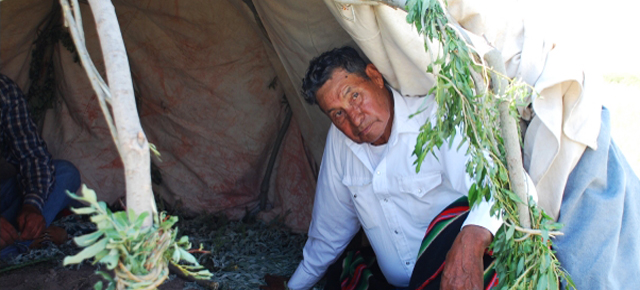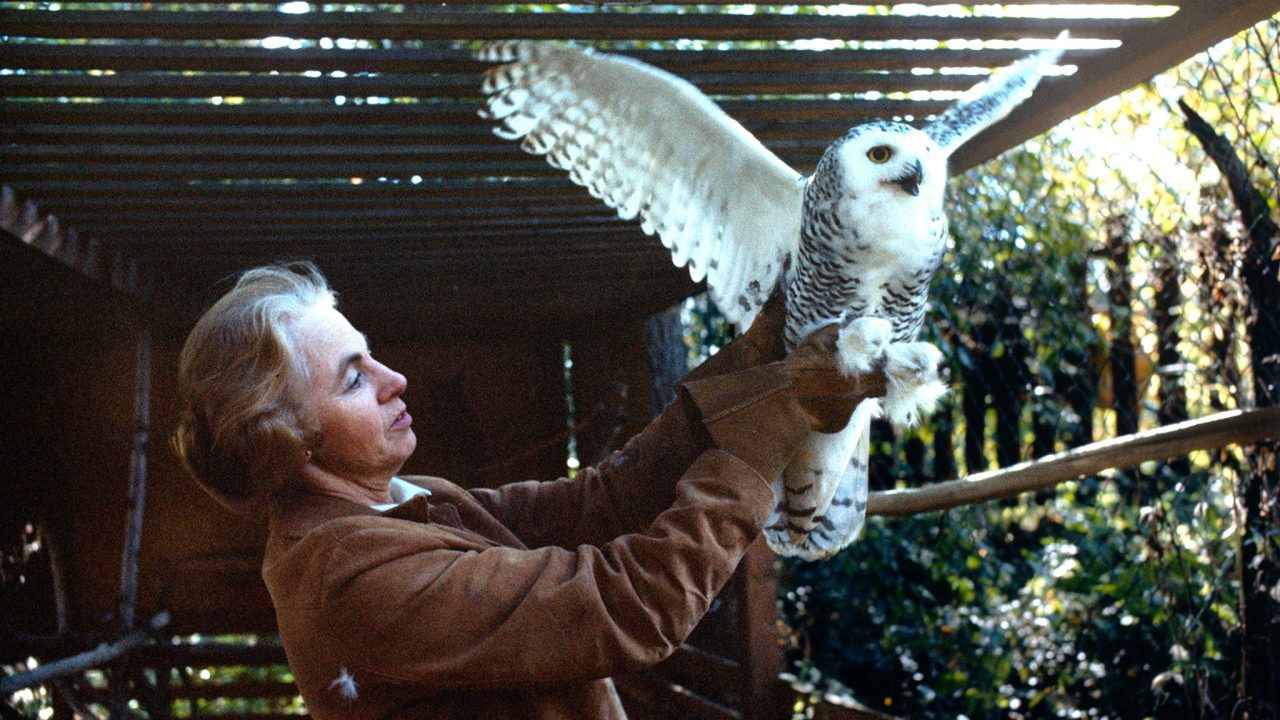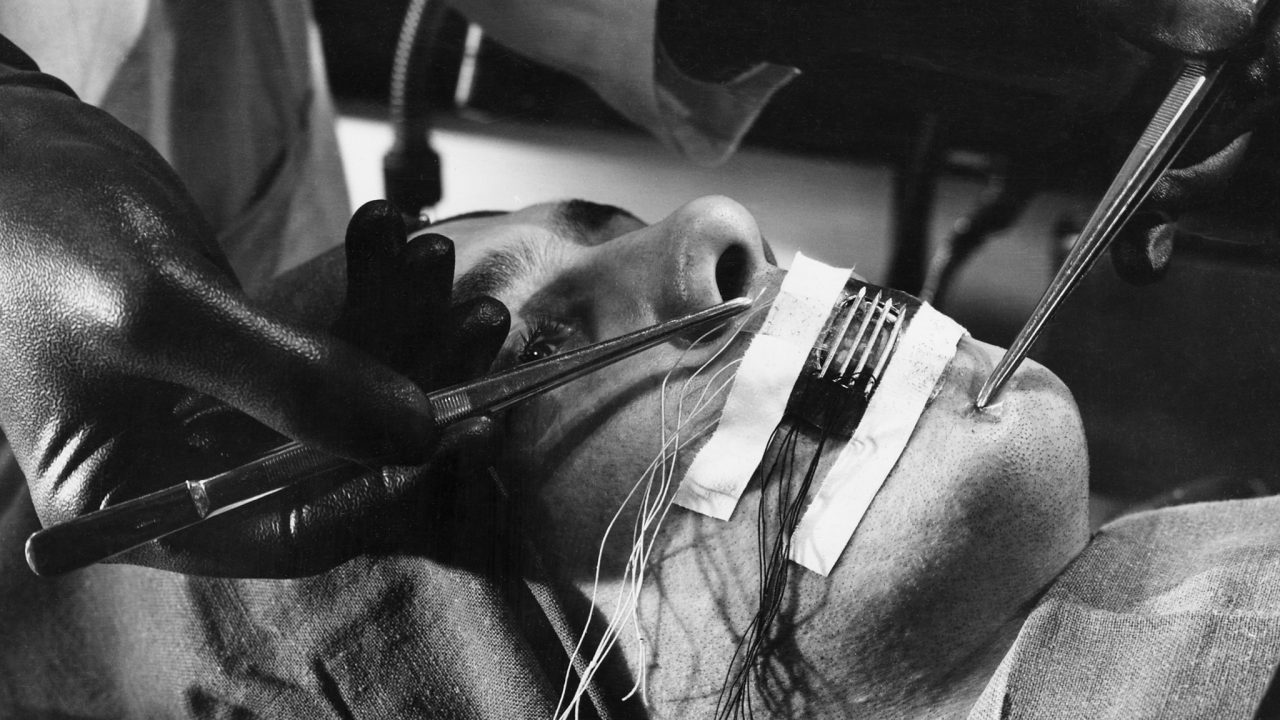
Director Narcisse Blood introduces new Pete Standing Alone documentary
Director Narcisse Blood introduces new Pete Standing Alone documentary
Narcisse Blood is a Blood Indian teacher and filmmaker working and living in Southern Alberta. He recently directed Round Up, a documentary about Pete Standing Alone, a remarkable man who is the main subject of 2 other NFB documentaries, Circle of the Sun (1960), and Standing Alone (1982), by the equally remarkable Colin Low.
The film depicts Pete, once a young cowboy way more interested in rodeos than in the traditional ways of his people, as a 81-year old spiritual elder, teacher, and community leader.
We follow him as he rounds up his horses (I dare you find a more dapper 81 year-old horse rider), visits his old residential school, and speaks in front of a classroom at a new community school where kids study in their mother tongue.
It’s a hopeful sort of film, highlighting as much the distance already crossed as the distance that remains.
Last week I had the chance to chat on the phone with Narcisse, who was just back from a weekend in Edmonton, where Round Up won best documentary at the Dreamspeakers Film Festival.
We spoke about the film, his relationship with both Pete and Colin, as well as a ton of loosely related topics, such as his wish to one day make a film about the great bison slaughter of the 19th century, from a Blackfoot perspective. (I said please do it.) Here is some of our exchange:
Carolyne Weldon: What was your relationship to Pete Standing Alone prior to making the film?
Narcisse Blood: I was first introduced to Pete in 7th grade. I “met” him through a film that was brought into our classroom, actually. It was 1967 and I was a student at St. Mary’s Residential School. They showed Colin Low’s Circle of the Sun. I remember it was the first thing I’d ever saw or heard about being Blackfoot. I remember how attentive my fellow schoolmates were… hearing the language, seeing the people. So from the start, my view of Pete was that he was a hero, right there in the community, at the time TV was being introduced.
Later, Pete became a member of the Sacred Horn Society, of which my uncle was also a member. He also served on the Council and then became an elder and a spiritual leader. I was always awed by him as a community member. He had important things to say, especially to young people.
CW: How conscious were you of making the third film of a trilogy? How influenced were you by the 2 previous documentaries, Circle of the Sun and Standing Alone?
NB: It’s a continuum. I was very influenced by visits from Pete [Standing Alone] and Colin [Low]. There is a very rich history between the 2 men. They care for each other very much. Starting in 1989, I started joining Pete and Colin when Colin was visiting the community. It’s really him that sparked my interest in filmmaking. I knew Colin was interested in us doing a third film about the Blood Indians. He said “I wouldn’t mind doing it, but you guys should do it. It’s time.” With this film, Pete wanted to pay homage to his old friend.
In many ways it was intimidating to me because I wanted to be truthful to what Pete wanted to say – which is also my truth. It was great to work with someone who’s had 60 years of his life documented on film. No one in our community has as much footage. It only made sense to incorporate some of that footage in Round Up. I still use those films in the classes I teach. They are timeless.
CW: Where was the film shot?
NB: It was shot on the Blood Reserve, the Blood Tribe community between Lethbridge and Fort Macleod in Southwestern Alberta, near the Montana border.
CW: Can you explain the actual notion of the round up? What are we seeing in the first scenes of the film when Pete gathers his horses?
NB: I’m 57. Everybody had horses when I was growing up. Pete has 500 heads of horses – horses you sell, bucking horses for rodeos, that sort of thing. In the film, the round up is a metaphor for some of the modern day-challenges we face. Ranching is going by the wayside. There is very little grassland in Southern Alberta, and most of it is being used up by the big industrial farming complex. The economy that comes from this warped way of thinking is senseless. Stupidity and greed are one and the same. In the film, the horses also illustrate the fact Pete is not only an elder. He’s got a living to make. He’s a rancher; that’s his livelihood. He still has his horses today, but that lifestyle is coming to a close.
CW: What is the ceremony shown in the film?
NB: It’s a bundles ceremony. It is celebrated in the summer, right after the first sound of thunder. About that, I would love if you could please mention in your article that the young helper you see gathering the willows for the sweat lodge is Joey Blood. I somehow managed to forget to include him in the credits. Yeah – my own son!
CW: In the film Pete visits a school where students learn the Blackfoot language – a vast improvement over the residential school he himself was sent to. What message did you wish to send with this film?
NB: Pete wanted a very positive message. He’s not just saying “remember who you are.” He’s lived it, and that makes his message that much stronger. Identity is everything. You need to know who you are. And not just our people – everybody.
Newcomers [European settlers] didn’t value the Blackfoot experience. Yet the Blackfoot predate Christianity, we predate the Greeks and the Romans. What sustained us this far – and I insist on the word sustain – is our ability to live in a space in a sustainable way. In a way that asks: What are the consequences of my actions?
It is clear that today’s practices are unsustainable. For example they just established – finally – that Southern Alberta is not fit for the extensive farming practices they’ve been using for the past hundred years. It’s too dry. So really, how are these unsustainable ways superior to the ways of the Blackfoot? We’ve always had to face challenges. From massacres to small pox to residential schools. Today’s challenge is to know who we are. Today, the goal of a Blackfoot person is to become a person. Not a doctor, not a lawyer, but a full person first. We ask our students 2 questions: Who are you? and Where is here? These are important questions because we all need to know who we are. And that isn’t a threat to anybody.
Round Up, Narcisse Blood, provided by the National Film Board of Canada
Watch the 3 films in our Pete Standing Alone Trilogy playlist
Click here to download the Round Up educator guide




nice films …good efforts 🙂
Thank you for documenting a slice of life from this very unique and rare person, Pete Standing Alone. I say rare because that generation who aren’t Christian and are still keeping their own traditions close to heart are getting farther and fewer between. I could feel the prayers and songs as I watched the film. Aho!
The first two films are timeless